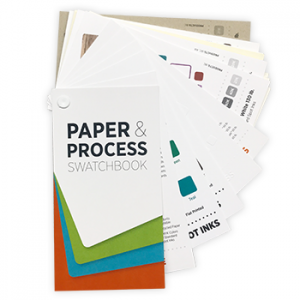Every year, the world produces 1.3 billion tons of waste. That’s a staggering amount, especially when you consider that from 2017-2018, the world produced 745.8 million tons of wheat and 479.8 million tons of rice. As a planet, we produce more garbage than we do wheat and rice combined. Holy landfill! By the year 2100, projections indicate yearly waste generation could reach 4 billion tons. That’s enough garbage to fill Busch Stadium from top to bottom four times a day. It makes one wonder if we won’t be living in space by then to escape all the garbage!
To put things bluntly, we have a garbage crisis on our hands here on the blue and green planet. And every small piece of refuse adds to the landfill plight. Recycling and reduction in waste have become paramount. Sustainability of the planet depends upon coming up with innovative ways to reduce the amount of garbage being sent to landfills. Labels are no exception to this endeavor. Consider the vast number of labels on bottles, cans, boxes, and other disposable products. Label backers contribute to the landfill problem, as does material waste from the creation of label stock. Are we destined to become one large landfill divided by ocean water?
Luckily, there are a growing number of green options today for labels and packaging. All of these options help reduce the impact on our planet, while helping boost sustainability. The job of protecting our planet doesn’t fall squarely on the shoulders of environmentalists. Consumers are looking for options that are eco-friendly and promote sustainability. Curious about label options for eco-conscious companies? Read on.
First, it’s important to consider where the packaging and labels will ultimately end up. Landfills? Compost bins? Recycled? Different stocks and/or adhesives can be chosen depending on the ultimate destination of the packaging and label. For biodegradable packaging, it only makes sense to select a biodegradable label as well. Compostable adhesive labels work well on packaging that is certified compostable. One toss into the compost bin – label and all! These types of labels are becoming more prevalent as the interest in composting rises and the tide slowly turns from single-use plastics.
Earth-minded companies that are committed to using packaging that is recycled are often interested in labels that are the same. Recyclable adhesive labels can be recycled right along with the packaging, and do not have to be removed. This cuts cost, work, and helps drive home branding messages that speak of commitment to recycling.
Newer practices in production allow labels to be created using a reduced amount of materials. Again this help cut waste, which reduces the manufacturing impact on the environment.
At Label Works, we’re committed to broadening our eco-friendly and sustainable label and adhesive options. This includes choosing stocks that come from well-managed forests. This provides environmental, social, and economic benefits. And this doesn’t mean just one or two options. These stocks are all FSC® certified stocks that are smartly sourced with our planet in mind:
- White Gloss
- White EDP
- White Matte Removable
- White Laser
- White Laser Removable
- Direct Thermal
- White Semi-Gloss
- 100% Recycled – Produced with 100% Post-Consumer Waste
- 30% Recycled Semi-Gloss – Produced with 30% Post-Consumer Waste
We also have recycling-compatible adhesives on stocks:
- 100% Recycled – Meets the TLMI testing protocol RCA LRP 2v5 for recycling compatibility
Offering sustainable label options isn’t where we stop, however. At Label Works, we recycle all cardboard, paper, plastics, and liner waste facility-wide. Our liner waste is shipped to a recycling facility where it is shredded and then burned as fuel at a local facility rather than taking up permanent residence in a landfill.
Want to learn more about ways in which labels have evolved to become more earth-friendly? Contact Label Works to discuss label options that are eco-conscious, while being as impactful as ever.
SOURCES:
 Whether it’s icy roads or a sudden snowfall keeping people indoors, doing business with customers in the winter can be a real challenge. And, when you’re faced with inclement weather, it can be a challenge to market to your customers as well. Here are just a few marketing strategies that you can employ even if your customers—or you—can’t make it to your storefront in person.
Whether it’s icy roads or a sudden snowfall keeping people indoors, doing business with customers in the winter can be a real challenge. And, when you’re faced with inclement weather, it can be a challenge to market to your customers as well. Here are just a few marketing strategies that you can employ even if your customers—or you—can’t make it to your storefront in person. If you haven’t sat down with your 2019 Navitor Catalog, you might not have noticed that one of your favorite products is back in our product offering. That’s right—full color plastic bags are back!
If you haven’t sat down with your 2019 Navitor Catalog, you might not have noticed that one of your favorite products is back in our product offering. That’s right—full color plastic bags are back! Print has a lot of features that can be replicated on a digital screen, but one feature simply must be experienced in person: texture. Texture might be a nearly unphotographable element of your customer’s print order, but whether your customer is looking for a glossy finish or subtle elegance, stock texture is an essential part of their print pieces.
Print has a lot of features that can be replicated on a digital screen, but one feature simply must be experienced in person: texture. Texture might be a nearly unphotographable element of your customer’s print order, but whether your customer is looking for a glossy finish or subtle elegance, stock texture is an essential part of their print pieces.